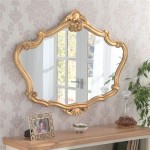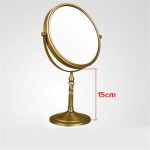Mirror Reflection Photography Ideas: Exploring Symmetry and Perspective
Mirror reflection photography offers a captivating avenue for creating visually compelling images. By utilizing reflective surfaces, photographers can manipulate perspectives, play with symmetry, and enhance the aesthetic appeal of their subjects. This technique is applicable across various genres, from landscape to portraiture, allowing for endless creative exploration. The underlying principle involves capturing the reflection of a subject in a mirrored surface, effectively doubling the visual impact and adding depth to the composition.
The effectiveness of mirror reflection photography is contingent on several factors, including the choice of reflective surface, the composition of the image, the quality of light, and the angle of the shot. Experimentation and careful consideration of these elements are crucial for achieving impactful results. This article will explore various ideas and techniques to help enhance one's abilities in mirror reflection photography.
Choosing the Right Reflective Surface
The selection of a reflective surface is a critical initial step. While traditional mirrors are an obvious choice, a wide range of alternatives can be employed to achieve varying effects. Still water, glass surfaces, polished metal, and even puddles can serve as effective reflectors. The characteristics of the chosen surface will significantly influence the final image. For instance, still water provides a natural, often slightly distorted reflection, lending an ethereal quality to the photograph.
Conversely, a clean, polished mirror offers a sharp, precise reflection, ideal for creating symmetrical compositions. Glass surfaces, such as windows or mirrored buildings, can be strategically utilized to blend the subject with its environment, creating layers of visual interest. Polished metal surfaces can introduce unique textures and distortions, adding an artistic flair to the image. Puddles, especially after rain, can provide unexpected reflections in urban environments, transforming mundane scenes into captivating visuals.
Consider the texture and clarity of the reflective surface. Scratches, imperfections, or ripples in the water can add character but might also detract from the clarity of the reflection. Experimenting with different surfaces under varying lighting conditions is essential to understand their reflective properties and how they interact with the subject matter. Choosing the right reflective surface sets the stage for a successful and visually striking image.
Mastering Composition and Symmetry
Composition is paramount in mirror reflection photography. A well-composed image draws the viewer's eye to the subject and effectively communicates the photographer's intent. Symmetry is a common and powerful compositional tool in this genre. When the subject and its reflection are perfectly aligned, it creates a sense of balance and harmony. However, symmetry does not always need to be perfect to be effective. Slightly offsetting the subject or incorporating elements that break the symmetry can create a more dynamic and engaging composition.
Rule of thirds can also be applied to guide the placement of the subject and its reflection within the frame. Placing the focal point at one of the intersections of the rule of thirds grid can enhance the visual appeal of the image. Leading lines, whether natural or artificial, can be used to draw the viewer's eye towards the reflection, creating a sense of depth and perspective.
Pay attention to the background surrounding the subject and its reflection. A cluttered or distracting background can detract from the impact of the image. Aim for a clean and uncluttered background that complements the subject and enhances the reflection. The angle from which the photograph is taken also plays a crucial role in determining the composition. Experiment with different angles to find the perspective that best captures the desired effect. Low angles can emphasize the reflection, while higher angles can provide a broader view of the environment.
Utilizing Light for Enhanced Reflections
Light is a fundamental element in all photography, and its importance is heightened in mirror reflection photography. The quality, direction, and intensity of light can dramatically affect the appearance of the reflection. Soft, diffused light, such as that found on a cloudy day, can create even and subtle reflections. Direct sunlight, on the other hand, can create strong contrast and dramatic highlights, adding depth and dimension to the image.
The angle of the light source relative to the reflective surface is also crucial. Side lighting can accentuate textures and details in the reflection, while backlighting can create silhouettes and ethereal effects. Experiment with different lighting conditions to see how they impact the reflection. Golden hour, the period shortly after sunrise and before sunset, is often considered ideal for landscape photography due to the warm, soft light it provides. This light can enhance the colors and textures in the reflection, creating a visually stunning image.
When shooting indoors, artificial lighting can be used to control the illumination of the subject and the reflective surface. Experiment with different light sources and modifiers, such as softboxes or reflectors, to achieve the desired effect. Pay attention to the color temperature of the light. Mixing different color temperatures can create unwanted color casts in the image. It is often best to use a consistent color temperature for both the subject and the reflection.
Exploring Different Subjects and Scenarios
The possibilities for mirror reflection photography are virtually limitless, spanning across numerous subjects and scenarios. Landscape photography often benefits from reflections in lakes, rivers, or puddles, capturing the grandeur of mountains, forests, and skies. Urban environments offer opportunities to capture reflections in building windows, glass facades, and even rain-slicked streets, revealing a different perspective on familiar city scenes.
Portrait photography can gain depth and intrigue by incorporating mirrors. A model posed in front of a mirror can create a unique self-portrait or introduce a sense of introspection. The reflection can also be used to reveal details of the subject that would otherwise be hidden. Still life photography can leverage mirrors to create symmetrical arrangements or to highlight intricate details of objects. Placing an object in front of a mirror can double its visual impact and create a sense of abundance.
Abstract photography can also greatly benefit from mirror reflections. Objects can be arranged and photographed in such a way that the reflection creates a distorted or surreal image. The possibilities are dependent on the photographer's vision and creativity. Macro photography also has a place with reflections. Reflective surfaces can be used to capture intricate details of small objects, such as flowers or insects, with added depth and perspective.
Post-Processing Techniques for Enhanced Results
Post-processing plays a significant role in refining and enhancing mirror reflection photographs. Basic adjustments such as exposure, contrast, and white balance can improve the overall image quality. Adjusting the highlights and shadows can bring out details in both the subject and the reflection.
Color correction is crucial for ensuring accurate and pleasing colors. Adjusting the saturation and vibrance can enhance the colors in the image, while careful color grading can create a specific mood or aesthetic. Sharpening can enhance the clarity of the image, particularly in areas where details are important. Removing any distractions can help draw attention to the subject and its reflection. This can involve removing blemishes, dust spots, or other unwanted elements from the image.
Cloning and healing tools can be used to seamlessly remove these imperfections. Cropping can improve the composition of the image by removing unnecessary elements or by focusing on a specific area of interest. Straightening the image is important, especially if the reflection is supposed to be symmetrical. Perspective correction can be used to correct any distortions caused by the angle of the shot. Advanced techniques such as dodging and burning can be used to selectively lighten or darken specific areas of the image, enhancing contrast and adding depth.
Filters can add special effects to the image. Gradient filters can be used to darken the sky or to add color to the reflection. Polarizing filters can be used to reduce glare and reflections, which can be counterproductive in mirror reflection photography, but can be useful in specific situations where you want to control the intensity of the reflection. Software such as Adobe Photoshop and Lightroom offer a wide range of tools for post-processing mirror reflection photographs. Mastering these tools can significantly enhance the final image and bring the photographer's vision to life.
Ultimately, mirror reflection photography is a rewarding pursuit that allows photographers to explore their creativity and develop their artistic vision. By carefully considering the reflective surface, composition, lighting, and post-processing techniques, photographers can create impactful and visually stunning images.

The Power Of Reflection 20 Stunning Images Mirrors And Light Eyeem

50 Stunning Reflection Photography Examples And Tips For Beginners Mirror Pictures

Creative Mirror Photography Ideas And Tips Solarpowered

40 Brilliant Self Portrait Photography Ideas And Tips Mirror Conceptual

9 Impressive Mirror Photography Ideas To Try Yourself

9 Impressive Mirror Photography Ideas To Try Yourself

Mirrors In Photography 6 Ideas

Mirror Photography Ideas Tips And Examples Adorama

Reflecting On Memories

24 Reflective Mirror Images To Make You Look Twice








